2013 Projects


 |
Deborah AjiloMechanical Engineering Advisor: Jim Bales, Edgerton Center Building a solar electric vehicle For my summer UROP, I wanted to learn the practical skills in mechanical engineering that I do not get to learn in class, like machining and design with Solidworks. My project this summer was to work on the design and manufacture parts of the suspension system of the Solar Electric Vehicle Team car. Personally, I was to design attachment tabs for the front suspension. These tabs would be used to connect the suspension to a frame for testing. Every week, we finalized and manufactured part of a component of the suspension so that they could be assembled during the upcoming Fall 2013 term. This research and hands-on experience taught me how to calculate the forces that suspension components experience when braking and cornering. These forces have to be accounted for when choosing the geometry and material for the suspension components in order to control the amount of energy lost when braking and cornering. Additionally, energy losses have to be kept very low, as the car’s only source of power is from the sun. |
 |
Viksit AroraElectrical Engineering and Computer Science Advisor: Charles Fine, Management Understanding the impact of information and communications technology on profitability for rural artisans My research project focused on understanding whether ICT (Information and Communications Technology) can increase profitability for rural artisans by providing a bi-directional information and feedback flow between them and global markets (retailers, consumers) to enable demand-driven production instead of the existing supply-driven approach. As part of our research to provide market linkages to artisans in emerging markets, we created an internet-based platform. The platform will be further designed as a design tool for the customization of traditional handicrafts made by rural artisans in developing countries. My initial responsibility over the course of this term was to design the website, which will serve as the platform for the rural artisans. |
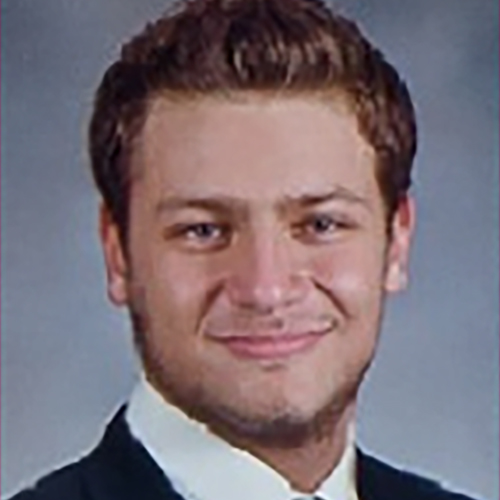 |
Jian BaraziManagement Advisor: Christopher Knittel, Management Natural gas prices and emissions from the electricity industry Over the past five years, natural gas prices have gone from over $12 dollars per million BTU to as low as $2 dollars per million BTU. This dramatic drop in prices has the potential to lead to large reductions in greenhouse gas emissions from the electricity sector, as coal generation gives way to natural gas. Our project sought to examine the environmental impact of the post-2005 gas glut in the United States due to new technologies related to hydraulic fracturing for extracting shale gas. My primary role was cleaning and organizing all of the data that we collected. Once the data were organized, we began to estimate how the changes in relative prices of coal and natural gas have affected emissions using a variety of econometric methods. |
 |
Kali BenavidesChemical Engineering Advisor: Kristala Jones Prather, Chemical Engineering Aerobic pathway to produce 4-Methyl Pentanol This summer I was involved in research to further develop and optimize the biosynthesis of 4-Methyl Pentanol. This alcohol is a viable alternative to petroleum and would be produced directly from glucose by E.Coli cells. Biofuels, especially 4-Methyl Pentanol, could be easily utilized by the current infrastructure already in place for standard petroleum. 4-Methyl Pentanol not only can be used by the standard engine but the branching in its chain, which raises its octane levels makes it superior to other alcohols. |
 |
Victor CaryMaterials Science and Engineering Advisor: Vladimir Bulović, Electrical Engineering and Computer Science Subtractive contact printing of quantum dot photovoltaics using polydimethylsiloxane My project this summer was to investigate the viability of a subtractive contact printing method for creating arrays of quantum dot photovoltaic devices. By defining features with a resolution of less than 100 nanometers, approximately on the order of the exciton diffusion length, higher solar power conversion efficiency can be achieved. These efficient devices could be patterned in thin films on many different surfaces, with lower installation costs than conventional silicon photovoltaics. |
 |
Chester ChambersChemical Engineering Advisor: John Lienhard, Mechanical Engineering Turning seawater to salt and water with electrodialysis: Electrodialysis membrane stack development The purpose of my project was to find the “sweet spot” of an electrodialysis system. By measuring changes of mass and conductivity of diluate and concentrate streams, we can find the change in Gibbs free energy. We use this value to measure efficiency and productivity. The disposal of saline brine streams is a significant challenge in the desalination and oil and gas industries. Now, filtration systems are unable to operate at the pressures required to increase the salinity of saline streams to saturated concentrations. Salts can only be produced with energy-intensive evaporation processes. The goal of this project was to develop an electrical brine concentration process—specifically a continuous flow electrodialysis system—capable of concentrating a salt solution to saturation. |
 |
Priyanka ChatterjeeMechanical Engineering Advisor: Rajeev Ram, Electrical Engineering and Computer Science Designing instrumentation for “finger printing” conventional energy samples via photometric analysis My research project this summer was comprised of a two-fold experiment to determine the most thermodynamically efficient method of testing optical devices in high-temperature environments. At the same time, we also characterized a series of crude oil samples provided to the lab from the oil company Schlumberger that will have to be done at these high temperature environments when tested on site. This project is significant for the energy community because there is a huge shift in conventional energy harvesting from oil to natural gas and especially in the case of new pipeline infrastructure like the Keystone XL Pipeline. My tests and experiments will determine the concentrations of groundwater in the crude oil samples from a major oil company that has potential to contribute to the Keystone XL Pipeline project. |
 |
Craig CheneyMechanical Engineering Advisor: Amos Winter, Mechanical Engineering Injection molded Jaipur Foot test apparatus Currently, there are 10 million people in India who suffer from locomotor disabilities, 5.5 million of whom are amputees. Over the past 36 years, BMVSS, a non-governmental organization, has been assisting people throughout India and other developing countries with disabilities, primarily though distributing prosthetics. Their most distributed product is the Jaipur Foot, 23,000 of which are given away every year. The current model of the Jaipur Foot is handmade by technicians and lasts for 3-5 years. Injection molding the foot has the potential to increase product quality reliability and lower the price. However, the current versions of the foot that are injection molded fail in as little as 3 months. The purpose of my UROP was to build a test apparatus that will allow the foot to be tested against international standards with repeatability, which would allow the injection molding process to proceed forward. |
 |
Staly ChinMechanical Engineering Advisor: Richard Fletcher, Media Lab Energy harvesting In medical settings, sensors on the body are not only made more expensive with bulky batteries and entangling wires, but they also become a nuisance to the wearer. In order to tackle these issues, Rich Fletcher and his team through the Edgerton Center D-Lab are researching the feasibility of autonomously powered sensors without the need for traditional energy sources or batteries by developing and testing various devices and circuits. The project involved prototyping various sensors and devices and measuring their power consumption and generation. I mainly focused on thermoelectric power production for this UROP. Thermoelectric power most likely takes advantage of the Seebeck effect, in which thermal differences are converted directly into an electrical output. Specifically, I worked on measuring the power produced by various thermoelectric devices as a function of their temperature gradients. Then, I prototyped different mounting and layout methods in order to maximize the output of the thermoelectric devices and explore possible applications that could be sustained by this kind of energy. |
 |
Minh DinhNuclear Science and Engineering Advisor: Bilge Yildiz, Nuclear Science and Engineering Effects of interstitial hydrogen on the mechanical stability of mackinawite surface films I have been investigating the effects of point defects (iron, sulfur, and hydrogen interstitials and vacancies) on the fracture toughness of iron sulfide films for the last three academic terms (Fall 2011 and Spring/Fall 2012) in the Nuclear Science Department. As a result of this study, we have been able to describe, for the first time, a novel mechanism of mechanical failure of iron-sulfide films (Dinh, in preparation). This topic is quite important in the world of energy research because corrosion is an ever-increasing threat to oilfield infrastructure that is expensive to mitigate. In this project I quantified energetics of formation of various point defects on the iron-sulfide and water interface. I also identified mechanisms that lead to formation of hydrogen species and quantified their rates. |
 |
Teasha Feldman-FitzthumPhysics Advisor: Una-May O’Reilly, Computer Science and Artificial Intelligence Laboratory Machine learning algorithms for predicting future wind speed and energy production This research project centered on using a copula algorithm for wind resource estimation. Wind resource estimation is the process of predicting the wind speed and power output of a wind farm for some future period of time. This is extremely important for companies running wind farms for several reasons. Sites for wind farms are chosen based on wind resource estimation. In addition, wind farm operators need to have some idea of how much energy they are going to produce to be able to sell that energy. By using a new kind of machine learning algorithm, a copula algorithm, we hypothesized that we could make a far more accurate wind model and prediction than the algorithms currently in use. My task was to complete that code and write methods that allowed the algorithm to be run on real wind farm data given to us by AWS Truepower. I also wrote functions that evaluate the quality of the predictions, and will be using my code working in a startup called Cardinal Wind during the school year. |
 |
Kristian FennessyArchitecture Advisor: Christoph Reinhart, Architecture Urban energy modeling My summer project was aimed at further development of UMI (Urban Modelling Interface), an urban energy modeling software created by Professor Christoph Reinhart. UMI is a plug-in for Rhino that allows the user to make informed design decisions from an energy and sustainability standpoint. UMI can tell the user the implications of their design in terms of operational energy, daylighting, and walkability to name just a few components. My work involved using Microsoft’s Visual Express Studio to program a functional and aesthetically pleasing graphical user interface (GUI) to display and compare results from UMI, an element of the UMI software that has been lacking. The fields of architecture, building technology, energy, and urban planning all benefit from UMI. |
Linley GerberBiology Advisor: Gerald Fink, Biology Replacement of the fermentation pathway in yeast to remove ethanol as a byproduct in the production of high-octane alcohols Current industrial production of biofuels is focused on ethanol, a naturally occurring byproduct of fermentation. However, higher branched-chain alcohols such as isobutanol have a higher energy content, absorb less water, are easier to refine, and are more compatible with current gasoline infrastructure. In order to address this issue, we are in the process of developing a novel method of replacing the ethanol fermentation pathway in S. cerevisiae. |
|
 |
Carlos GreavesElectrical Engineering and Computer Science Advisor: Sheila Kennedy, Architecture Maximum power point tracking circuit and environmental monitoring tools for the portable light project This summer I worked for the Portable Light Project (PLP), which designs and distributes textile solar kits that provide cell phone charging and LED light to people in developing countries. The latest phase of this project is specifically targeted to communities in the Amazon region of Brazil, where we have been distributing kits for just over a year. My main role in the project this summer was to finish my circuit design to improve the efficiency of the Portable Light solar cells. Currently, the majority of these circuits, known as Maximum Power Point Tracking (MPPT) circuits, are only used in large-scale solar arrays. Applying this technology to the PLP would mean community members could spend less time charging their kits in the sun, and more time using them for charging cell phones and having access to LED light. Additionally I had the opportunity to travel to the Amazon region for a week to repair kits that had been damaged over the course of the previous year, and also to educate community members on “best practices.” |
 |
William KalbMechanical Engineering Advisor: John Lienhard, Mechanical Engineering Turning seawater to salt and water with electrodialysis: Development of a concentration monitoring system Fresh water production by desalination is costly and inefficient from both a financial and scientific point of view. Unfortunately, in many parts of the world—especially arid, coastal areas—desalination is one of the only viable methods to produce drinking water. My project aims to lower the energy cost per cubic meter of fresh water produced by electrodialysis, making it a more viable method of fresh water production. Electrodialysis works by using an electric current to drive ions (in our case, sodium chloride) between two streams of liquid, causing one to become more concentrated and one to become more dilute. These streams pass through a large stack of membranes, with ion transfer occurring all across the membrane surface. The other UROP students and I constructed a system of pumps, tubes, valves, and meters to pump these streams through an electrodialysis stack. |
 |
Gabriel KarpmanElectrical Engineering and Computer Science Advisor: Patricia Maes, Media Arts and Sciences Hardware specific optimization for graphics and computer vision with LuminAR My responsibility for the summer consisted of work on Vision-Server: the computer vision and image processing backend to the LuminAR system. The group is primarily, at present, focused on the interface design component and less on the cutting-edge of computer vision so this role required research of the existing literature and methods, and of working on viable implementation capable of running robustly and in real time on the relatively modest processing power of the current generation of LuminAR hardware. My work this summer focused on tracking and pose estimation of objects within the devices field of vision, to enable the projection of images suitably warped so that—on the surface on which they appeared—they would appear correctly shaped and in correct orientation and location. |
 |
Daniel KilcoyneChemical Engineering Advisor: Michael Strano, Chemical Engineering Raman characterization of carbon nanotubes during molecular transport I worked with the Strano Research Group to study the molecular transport properties of single-walled carbon nanotubes (SWNTs). Studying ion flow through carbon nanotubes will help scientists and engineers to manufacture large scale processes to desalinize salt water. Current desalinization processes require large amounts of energy, thus semipermeable membranes utilizing SWNTs have promise in largely decreasing the needed energy for desalinization. In areas with little fresh water and large amounts of seawater, improving the efficiency of salt extraction will be key to the welfare of much of the human population. |
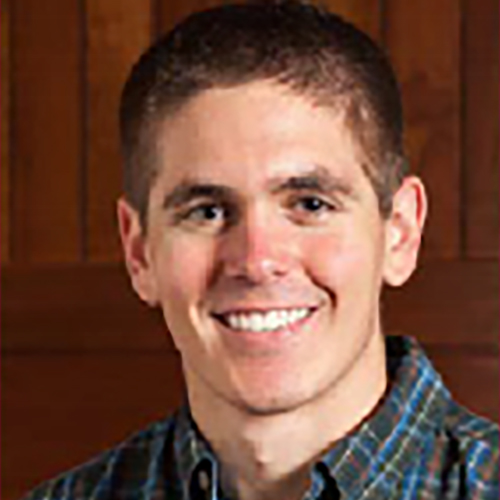 |
Jonathan KongoletosMechanical Engineering Advisor: Leon Glicksman, Architecture Design considerations for clean rooms within the proposed nMaSS facility The intention of this project is to learn the possible energy management improvements that can be made to the existing nMaSS building design strategy. This topic is important to the world of energy research because much of the publicly-available research was not pursued after the mid-2000s, when the government contract with Lawrence Berkeley National Lab ran out. Research on this question was then taken in-house, where it remains. Part of this project [is] aimed at determining what was learned by others in the absence of LBNL and how MIT can make use of that knowledge. This UROP began by looking at the published literature referring to cleanroom design, operational procedures, and practices. Several authors were contacted to clarify portions of articles, about 30% of whom responded. Further, the ASHRAE fundamentals books were consulted to aid in the established procedures of cleanrooms. |
 |
Isaac LaJoieMechanical Engineering Advisor: Steven R. H. Barrett, Aeronautics and Astronautics Finding the limit of thrust density and efficiency of electrohydrodynamic propulsion For this summer’s UROP, I conducted research on an Aero/Astro project under the supervision of Professor Steven Barrett, PhD student Chris Gilmore, and SM student Andrew Dexter. This project focused on electrohydrodynamic (EHD) propulsion (which makes use of electric fields to ionize surrounding air between two electrodes, generating fluid motion through collisions), where I specifically looked at the thrust density of the system. What makes this technology so promising is the lack of moving parts, the absence of onboard fuel or propellant, and the potential environmental benefits. In addition, it has tested to be 55 times more efficient in generating thrust per unit input of power than today’s jet engines. |
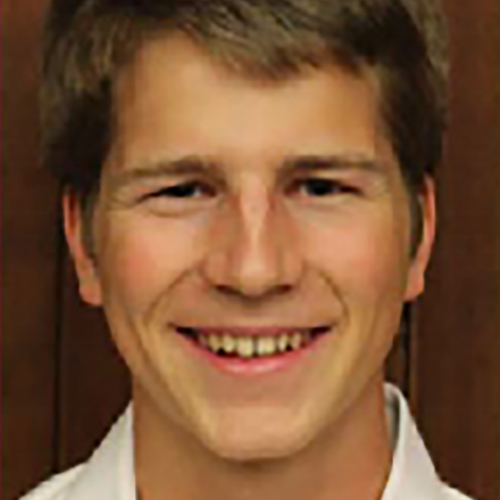 |
Colin McDonnellElectrical Engineering and Computer Science Advisor: Michael Greenstone, Economics Analyzing the impact of fracking on the welfare of local communities My Energy UROP focused on doing economics research regarding hydraulic fracturing. We analyzed whether fracking has the economic, seismic, and health-related impacts it has come to be associated with. We used data from the fracking reports published by natural gas companies, as well as housing data, infant mortality data, health and prescription records, and seismic data for the state of Pennsylvania (the state on which our analysis was primarily focused). With these data, we created econometric models to extract useful information that will be checked for robustness. |
 |
Jared McKeonMechanical Engineering Advisor: Marin Soljačić, Physics Plasmon-assisted thermal energy transfer as a basis for efficient near-field thermophotovoltaics Near-field thermophotovoltaic (NFTPV) systems offer great promise for an efficient solid-state energy conversion platform. Similar to the role of selective emitters/absorbers in conventional thermophotovoltaics, NFTPV devices benefit greatly from metamaterials with carefully tailored surface states. Owing to its remarkable electrical and optical properties, as well as mechanical stability and electric tunability of the Fermi level, graphene is a particularly exciting metamaterial for near-field thermophotovoltaic applications. Prof. Soljačić’s group has developed analytical and numerical models predicting that thermally excited plasmon-polariton modes can strongly enhance the near-field radiation transfer between two closely separated graphene sheets. Building on these theoretical predictions, our goal was to build a system that experimentally characterizes the effect of plasmon modes in graphene in the near-field energy transfer. |
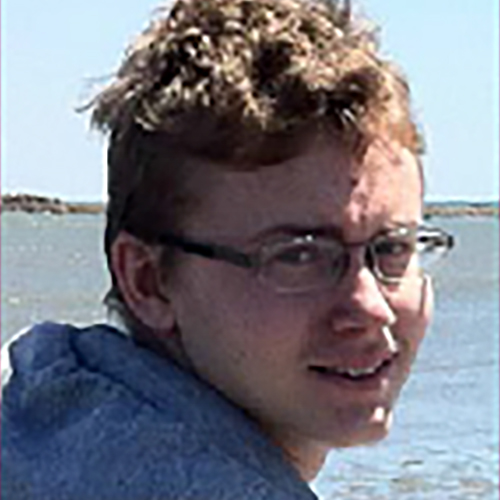 |
Martin McLaughlinChemistry Advisor: Catherine Drennan, Biology Lipoyl synthase: Mechanism of enzymatic c-h bond activation This project aimed to elucidate the catalytic mechanism of the lipoyl synthase enzyme from Mycobacterium tuberculosis. A proper understanding of lipoyl synthase not only aids the effort to replace chemical synthesis of lipoic acid with biological synthesis on an industrial scale, it also paves the way for future protein engineering projects to harness the reactivity of lipoyl synthase for other useful and chemically difficult syntheses. This project used X-ray crystallography as the primary tool to study the lipoyl synthase mechanism. Under certain conditions, the enzyme can be stably cross-linked to its substrate in a reaction intermediate. A crystal structure of this intermediate would reveal the nature of the cross-linking and either validate or falsify a long-standing mechanistic proposal for the reaction. |
 |
Viveka MishraMechanical Engineering Advisor: Sheila Kennedy, Architecture Portable power and light for Brazil’s Amazon This summer I entered the Portable Light Project during Phase II of prototyping. The goal of the Portable Light Project is to facilitate access to light and connectivity for remote Amazon River communities in Brazil. The challenge was ensuring the easy integration of renewable and cost-effective energy with the daily lives of the local community and finding alternative ways that the Portable Light kits could be a valuable resource. There were several technical issues I was targeting, and the second prototype is being developed with my modifications this coming year. The original prototype had several shorting and discharging issues, as well as some convenience complaints as reported by users. I worked on altering the casing for the electronics for the second prototype in order to make the rechargeable battery more accessible while maintaining the water-resistant nature of the original casing. |
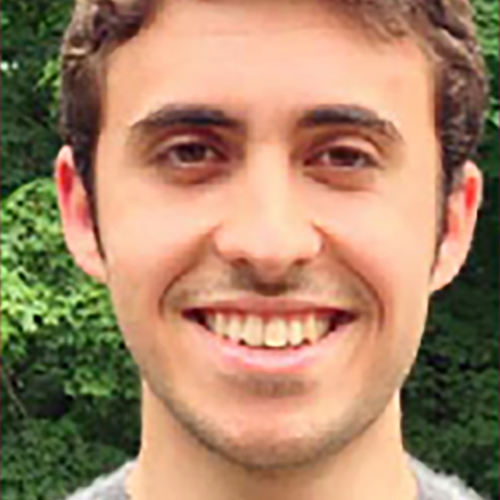 |
Daniel MokhtariChemistry Advisor: Christopher Cummins, Chemistry Synthesis and application of modified hexacarboxamide cryptands for use in lithium-air batteries Lithium-air batteries offer next-generation power storage capabilities with energy storage densities rivaling fossil fuels. The obvious importance of such batteries has sparked considerable interest in their design over the past few decades. Fundamentally, these batteries operate via reduction of oxygen at the cathode by lithium-metal to generate, in aprotic designs, lithium peroxide (Li2O2). In charging, lithium metal is regenerated at the anode, evolving oxygen gas. My primary objective was to generate, and functionalize via palladium-catalyzed Suzuki-Miyaura cross coupling, a triiodo hexacarboxamide crypt and to gain access to novel crypt and derivatives with solubility and peroxide affinity properties advantageous for their application in lithium-air batteries. Furthermore, with a meta-amino derivative of the hexacar-boxamide crypt and (mBDCA-5NH2-H6), I attempted one-pot diazotization and deposition on a glassy carbon electrode to probe the ability of a derivatized electrode to more reversibly generate peroxide. This work may improve the reversibility, and utility, of lithium air batteries. |
 |
Tat Nghia NguyenNuclear Science and Engineering Advisor: Neil Todreas, Nuclear Science and Engineering Design of an inverted fuel pressurized water reactor The Inverted Pressurized Water Reactor (IPWR) is a new reactor concept that has been investigated recently with the goal of increasing the power density above current PWRs. Increasing power density allows more power to be generated in the same vessel size as an existing current standard PWR thus allowing the capital cost, measured in $/KWH electricity, to be reduced. Such a reduction is exactly the step needed to make nuclear power more economically viable and thus address a key problem for the deployment of more nuclear capacity with its attendant benefit to climate change mitigation. In this project, by using the new correlations to study the advantages and disadvantages of the twisted-tape insertion, we want to investigate the IPWR design in general and the cooling channel design in particular and come up with a new channel design that allows the IPWR to achieve higher power density. |
 |
Simon OkaineCivil and Environmental Engineering Advisor: John Germaine, Civil and Environmental Engineering Nanocarbon fibers as mechanical sensors in cement During the summer of 2013, I worked as a UROP student at Schlumberger. The main focus of the research was to study how the incorporation of different nanoparticles into cement pastes altered the electrical and mechanical properties of cement. As a UROP student my objective was to increase my understanding of the electrical behavior of these composites. In addition, I intended to learn how to use tools such as thermogravimetric analysis, calorlimetry, and electron micro-spectroscopy to analyze the chemical and physical properties of the new cement/nanoparticle composites. This research is particularly interesting to the energy industry. A lot of the infrastructure required for industry is rather large. Often times, structural issues can go unnoticed until failure occurs. This results in the loss of time and money. |
 |
Chimdimma OkwaraBiology Advisor: Bradley Olsen, Chemical Engineering Thermodynamics of self-assembly in globular protein-polymer conjugates Protein self-assembly is a concept that has attracted attention for its distinct applications. These applications include sensors, catalysts of energy conversion, protein photovoltaics, fuel cells, drug delivery, and chemical agent detoxification. The energy applications are particularly important. Protein self-assembly can be applied to convert chemical energy into a mechanical force needed in chemical engineering systems. Furthermore, the utilization of natural processes such as protein self-assembly would contribute to the increasing demand for “green” energy, as less material will be wasted and fewer negative by-products will be produced. To investigate this question, we examined the mCherry protein with six of its mutant variants. In a lengthy process, we purified each protein and conjugated it with the PNIPAM polymer. After another purification, the seven (including the wildtype) protein-polymer combinations were separated into samples. They were dissolved into two solvents, water and a sodium chloride solution, at different percentages. In these samples, the bioconjugate creates varied nanostructures. |
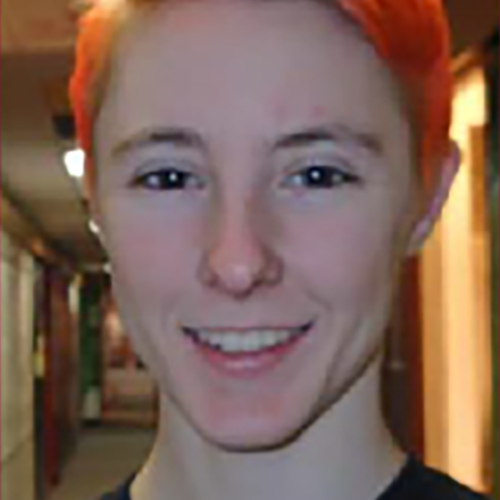 |
Jessica ParkerCivil and Environmental Engineering Advisor: John Germaine, Civil and Environmental Engineering Expanding cement for oil well applications The goal of my UROP project this summer was to aid in continuing research on improving cement for oil-well applications. While clean energy dominates the field of energy research, oil continues to provide a significant portion of the world’s energy. Ongoing research in the oil industry can help reduce the impact of oil-based energy sources during the long drive toward the use of cleaner energy sources worldwide. The general goal of the research group is to improve the cement used to seal the annulus between the drilled hole and the main pipe in an oil well. This cement seal prevents oil from leaking out around the pipe and causing pollution or even an explosion. Very little testing had been done to evaluate the basic properties of the cement such as strength and elastic modulus. My work this summer focused on developing and using a procedure to test these basic properties using samples of the new formulations. |
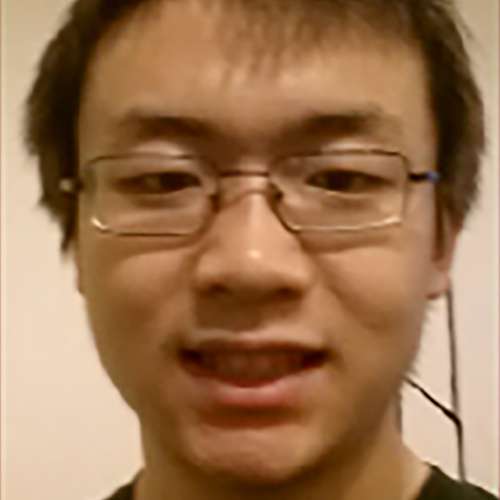 |
Ruifan PeiMaterials Science and Engineering Advisor: Yuriy Román, Chemical Engineering Inexpensive ceramic nanoparticles to replace platinum catalysts in direct alcohol fuel cells My UROP in summer 2013 involved developing cost-efficient catalysts for applications in energy. Working in Prof. Yuriy Román’s lab in the Department of Chemical Engineering, I mainly worked on the synthesis and characterization of various transition metal nanoparticles that could potentially catalyze electrochemical and hydroprocessing reactions. We mainly used a reverse microemulsion synthesis method, which involved using a surfactant-mediated water-in-oil suspension to produce 3-5 nm nanoparticles encapsulated in silica. The silica coating was then dissolved and nanoparticles were mounted on the appropriate support for catalytic testing. This method is relatively simple and can potentially result in high quality catalysts. I worked on the synthesis of several different materials using this method, characterized them by X-ray diffraction and transmission electron microscopy, and tested their electrocatalytic efficiency using a potentiostat. |
 |
Isabel PlanaChemical Engineering Advisor: William Green, Chemical Engineering Reconstruction and use of a novel apparatus for measurement of gas-phase radical kinetics Throughout the course of this summer I worked in the Green Lab on a project titled “Reconstruction and use of a novel apparatus for measurement of gas-phase radical kinetics.” This apparatus combines mass spectrometry and laser absorbance, which allows us to monitor the product branching as well as the reactant concentration as the reaction proceeds. We have directed our efforts toward two reactions, vinyl radical with ethene and vinyl radical with propene. Vinyl radical is a common intermediate in combustion and its reaction with unsaturated hydrocarbons plays a key role in the production of aromatics, polyaromatic hydrocarbons (PAH), and the formation of soot, which is a hazardous pollutant. I focused on analyzing the I atom and vinyl traces to estimate the initial amount of vinyl present in the reaction, which is necessary to fit a kinetic model to the data. I atom is produced in a one-to-one ratio with vinyl when the vinyl iodide is photolyzed to initiate the reaction. |
 |
John QueeneyMechanical Engineering Advisor: Evelyn Wang, Mechanical Engineering Fabrication and characterization of nanostructured surfaces for scalable condensation heat transfer enhancement and solar energy absorption The purpose of this summer UROP was to research thermophotovoltaic devices and condensation on superhydrophobic nanostructured surfaces. Both of these research areas hold great promise for practical applications. With condensation, we were trying to develop a surface coating for pipes and other surfaces that would enhance heat transfer by condensation. Such a surface holds great promise for use in power plants and other industrial processes, in which the enhanced heat transfer would increase overall system efficiencies, saving massive amounts of money and time. There are two viable options so far: copper oxide nanoblades and zinc oxide nanowires, each coated with a different hydrophobic coating. This summer, I fabricated these surfaces and refined the fabrication techniques to try to find the ideal method. Fabrication involves mixing solutions of various chemicals and then submerging the sample surface in the solution. By varying the relative concentrations of the chemicals, we are able to control the growth of the nanostructures. |
 |
Stephen RodanMechanical Engineering Advisor: Chryssostomos Chryssostomidis, Mechanical Engineering Ocean engineering experience for MIT’s Sea Grant I spent my summer 2013 UROP doing ocean engineering with MIT’s Sea Grant College Program. My project revolved around the development of instructional materials to teach ocean engineering concepts and particularly remotely operated vehicles (ROVs) that measure ecological impacts due to power plant emissions. I helped my supervisor, Kathryn Shroyer, teach two high-intensity summer programs for rising high school juniors and seniors. With a focus on the fundamentals of the engineering design cycle, I created slides, gave lectures, and instructed and advised students on various subjects. My UROP is important to the world of energy because the discharged water from the Kendall Cogeneration Power Plant heavily pollutes the Charles River with temperatures up to 105˚F. This is very harmful to the environment, and so the goal of our first summer program, the Ocean Engineering Experience (OEX), was to create ROVs that collected heat, temperature, and location data to better understand the bleed-off effect from the hotter, discharged water. |
 |
Curtis SerranoElectrical Engineering and Computer Science Advisor: Khurram Afridi, Electrical Engineering and Computer Science Comparative evaluation of alternative twice-line-frequency energy buffering architectures The goal of our project was to develop an energy buffer architecture that did not rely on electrolytic capacitors without increasing the system’s passive volume. An energy buffer is required to convert AC power (from transmission lines and wall outlets) to DC, which powers virtually all consumer electronics, as well as LED lighting, and plug-in electric vehicles. Traditionally an electrolytic capacitor placed across the DC bus terminals fulfills this role. However, electrolytics have a limited lifespan (around 10,000–25,000 hours). This lifespan is decreased further at high operating temperature, and the electrolytic will evaporate out of the capacitor even if the device is not in use. Therefore, the electrolytic capacitor is unsuitable for long life applications such as LED lighting, or solar panel micro-inverters. We hope to build an LED driver comparable to commercial products using ceramic capacitors, which will have a greatly extended lifespan. |
 |
Alexander SevertMechanical Engineering Advisor: Yang Shao-Horn, Mechanical Engineering Understanding the reaction kinetics of vanadium-redox flow batteries The primary focus of my research this summer was to obtain substantially improved fundamental understanding of the reaction kinetics of vanadium-redox flow batteries (VRFB). I worked with Nir Pour and the Electrochemical Energy Lab to identify advanced electrode materials with improved kinetic performance and stability. VRFB is proving to be one of the leading technologies that could help displace fossil fuel with clean energy. Storing the energy collected with solar and wind has been a problem since those technologies were invented. The enhanced battery technology will assist in creating a clean energy society. I prepared different types of electrodes and vanadium electrolyte and conducted multiple measurement methods to try to understand the fundamental kinetics. Washing the electrodes with different acids, adjusting the time the battery was flowing, and changing the concentration of the electrolyte were all different ways that I investigated the electrochemical behavior of this battery. |
 |
Xingyi ShiChemical Engineering Advisor: John Williams, Civil and Environmental Engineering Characterizing the rheology of non-newtonian particle suspensions via coupled fluid-particle dynamics Simulation of particle transport in fluids using computational fluid dynamics (CFD) is a widely applied practice in industry. From tracking the flow of pollutants in air to mimicking red blood cell movements in blood, CFD offers a fast and accurate solution that would not be easy to obtain in laboratory conditions. The main focus of this project is to conduct a series of numerical rheometry experiments using a newly developed CFD software that combines the lattice Boltzmann method and the discrete element method. The combination of the two numerical methods enables accurate simulation of particle suspension in liquids, whose rheology and flow characteristics are of particular interest. |
 |
Areza SumitroChemical Engineering Advisor: William Tisdale, Chemical Engineering Controlled stamping of quantum dot films This summer I worked at the Tisdale Lab in the MIT Chemical Engineering Department on a research project entitled “Controlled stamping of quantum dot films.” The goal of the project was characterization and optimization of the influence of film morphology on quantum dot solar cells. Specifically, my goal was to construct a specific morphology to learn more about the resonant energy transfer between quantum dots. My research this summer was conducted in three stages. The first stage involved stamping films of quantum dots onto chemically treated glass slides. Once a clean, visible stamp on glass slides was accomplished, I shifted to stamping onto quantum dot films. The third and final stage was construction of a special architecture of quantum dot films that was thereafter characterized in terms of thickness and roughness as well as tested for energy transfer properties between dot films. |
 |
Lasya ThilagarElectrical Engineering and Computer Science Advisor: Richard Fletcher, Media Lab Mobile phone software for anemia screening devices for India clinics The purpose of this project was to develop a small, cheap device to screen patients for anemia in rural villages in India. The device was to use photodiodes to analyze a blood sample, which will be analyzed by an Android app to determine whether the patient has anemia. The device is powered by sending a loud signal through the headphone jack, which is then converted to electrical power, and it will send data back to the phone by sending a signal back through the microphone. The app will translate the data encoded in the audio signal, analyze it, and display the results of the blood test. I worked under the supervision of Dr. Fletcher to continue developing the Android app that will receive and analyze the data from the device, using my experience with programming in Java. |
 |
Alexandra WassenbergAeronautics and Astronautics Advisor: Paulo Lozano, Aeronautics and Astronautics Investigating the performance of various materials and methods in the batch processing of ion electrospray thrusters The purpose of this summer’s research was to develop ceramic materials with highly controllable and homogeneous porosity that can also be shaped with little difficulty through casting or laser ablating. These materials have the potential to be used as highly efficient ion emitters in systems including ion electrospray satellite thrusters and alternative energy sources, such as vaneless ion wind generators. The sol-gel preparation and process investigated this summer was based on a procedure outlined in Hartmann et al. An acidic aluminum salt, aluminum chloride hexahydrate (AlC3·H2O), was utilized as the precursor and mixed with polyethylene oxide, ethanol, and water. |
 |
Raku WatariMaterials Science and Engineering Advisor: Donald Sadoway, Materials Science and Engineering Investigating low-cost electrolytes for liquid metal batteries This summer, I worked in Group Sadoway as a part of the Liquid Metal Batteries project. The key distinguishing feature of the battery is its entirely liquid phase composition—the electrodes and electrolyte are all molten. Due to its liquid nature, the battery has high energy density and fast charging and discharging capability, as well as a long lifetime not ordinarily found in batteries with solid components. These factors make LMBs a good candidate for grid-level energy storage, and when coupled with intermittent renewable energy sources such as solar and wind, an opportunity to expand green energy. My main role for this summer was initially to investigate chemical components that would allow the LMBs to run at low temperatures. In the lab, I constructed and tested the smallest scale batteries with 1 amp-hour of charge capacity. Additionally, I spent a good portion of my time trying to generate good, reproducible results for batteries operating below 400°C. |
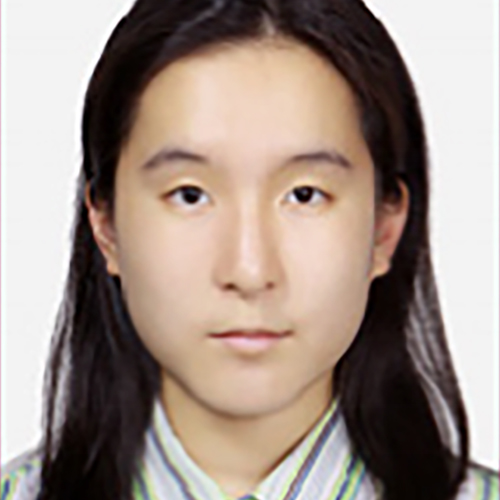 |
Mirim YooElectrical Engineering and Computer Science Advisor: Martin Polz, Civil and Environmental Engineering Adaptive changes of microorganisms in different community settings Biofuels, on a local and small scale, can serve as an alternative energy source. Often, biofuels are processed from their raw ingredient into their desired form using microbes. Microbes in a group are often more resilient to variations in environmental conditions. They may also be more productive in carrying out the desired metabolic activity. Microbes also play a role in corroding the infrastructure for energy production. My mentor has previously created a mutant library of Vibrio crassostreae. They are of the same species and strain, and therefore very similar. What differs from one mutant to another is that they each have one gene knocked out. My mentor and I will grow the mutant library and wild types (untempered) of the same and different species together. We plan to sequence the entire genome of the congregate, and check which mutants with specific genes knocked out flourished or floundered under which conditions. |
 |
Clare ZhangMaterials Science and Engineering Advisor: Jeffrey Grossman, Materials Science and Engineering Applications for solar thermal fuels My summer UROP project focused on developing a model of thin film solar-thermal fuel heat transfer, with the ultimate goal of defining the parameters for a de-icing application. The end product of the project as a whole will be integration of solar thermal fuel into car windshields to use as a rapid and efficient defroster. My particular duties involved designing and building an experimental set-up/procedure to emulate a solar-thermal fuel and using this design to pinpoint the functional requirements necessary for a solar-thermal de-icer. Solar-thermal fuels are becoming a major contender in clean energy research. Applications of their characteristics are a novel topic of research, the results of which will garner interest into further developing and synthesizing the fuel itself. |